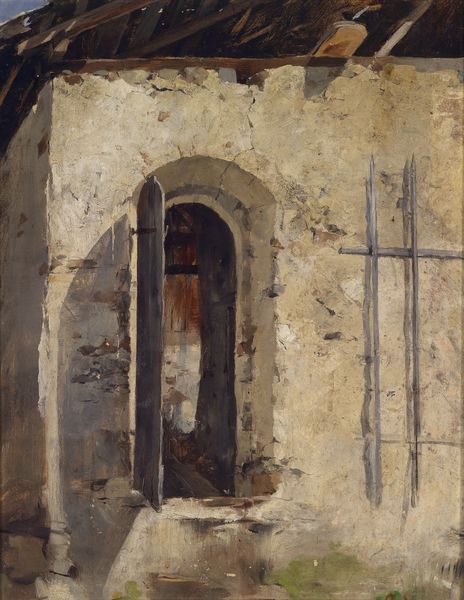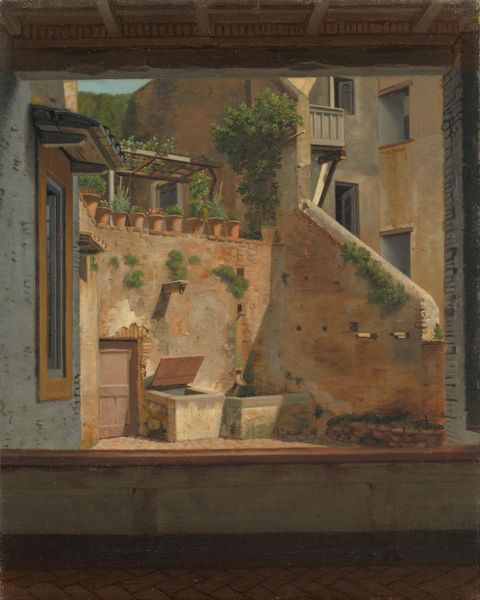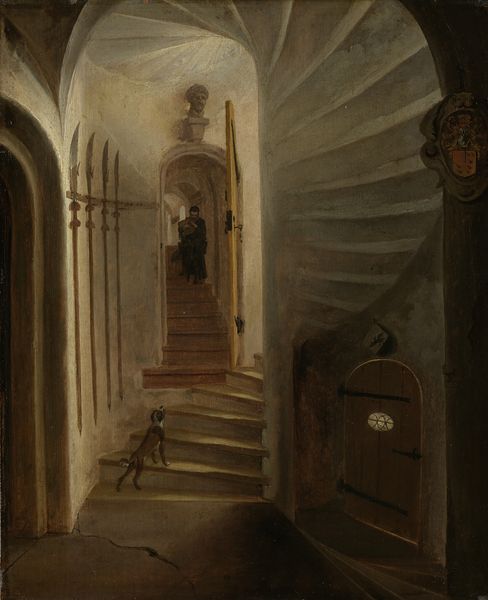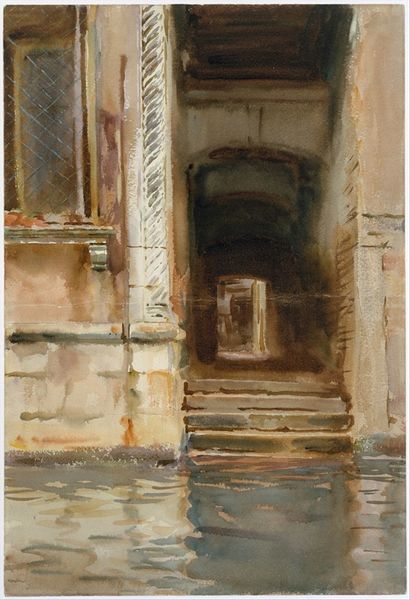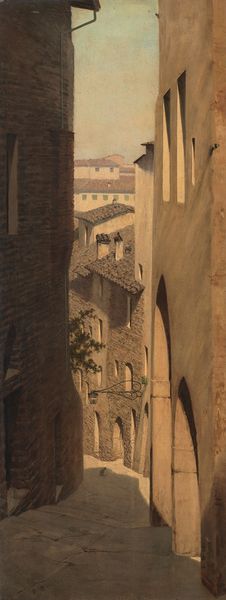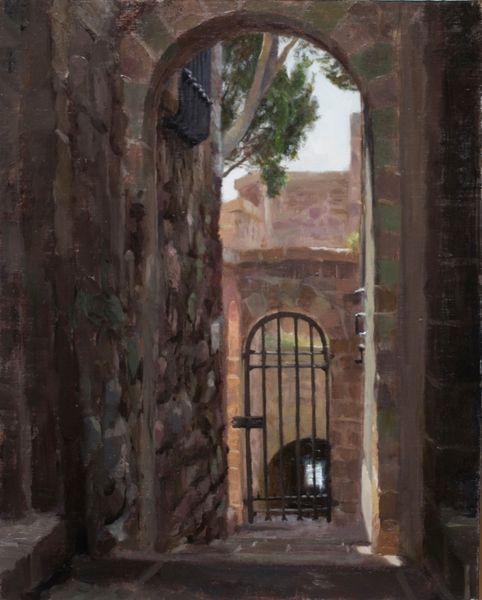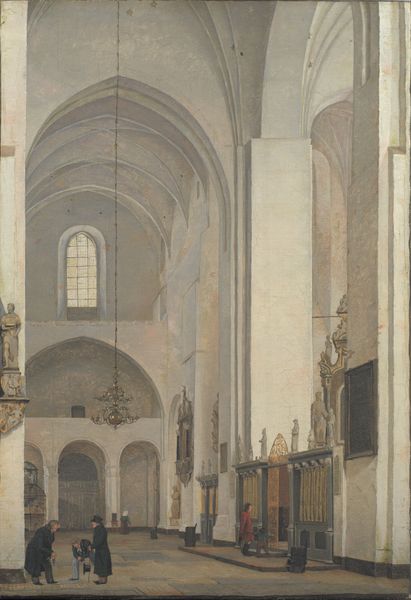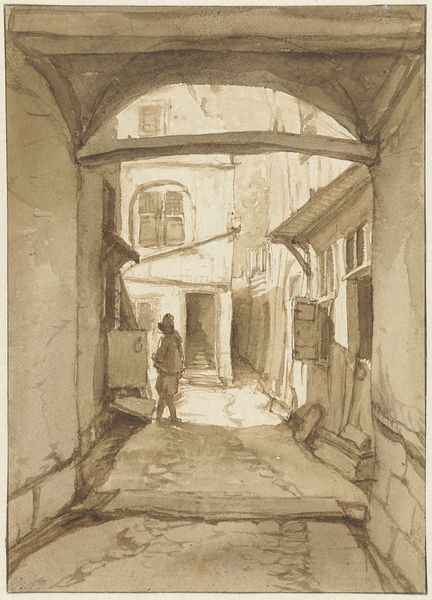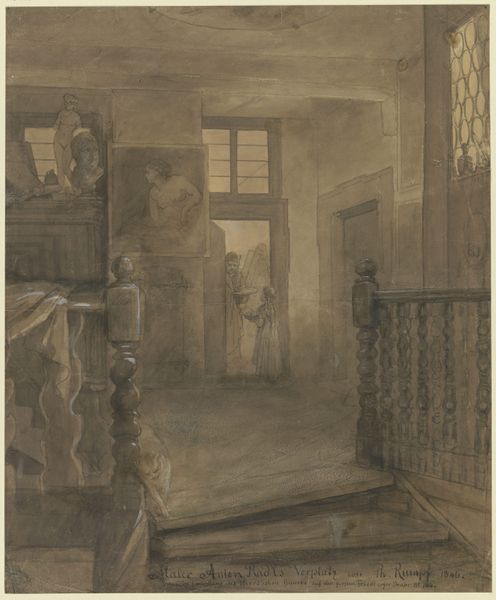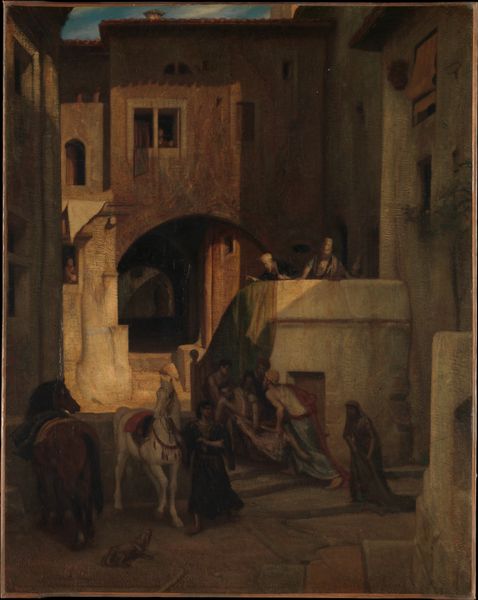
painting, oil-paint, architecture
#
painting
#
oil-paint
#
sculpture
#
landscape
#
classicism
#
romanticism
#
cityscape
#
genre-painting
#
watercolor
#
architecture
#
realism
Dimensions: 37 cm (height) x 26 cm (width) (Netto)
Curator: Here, we're looking at Ernst Meyer's oil on canvas, "A Roman Alley," painted sometime between 1828 and 1832. Editor: It feels…worn. A bit melancholic, actually. Like time itself is etched into the stone. Sort of whispers secrets of forgotten stories. Curator: Exactly. Consider the social and material reality here. Meyer, working within a romantic framework, represents a city that’s both historical monument and a lived-in, breathing space for everyday life. The alley, rendered with a deliberate realism, isn't just stone and architecture; it's the site of human activity, shaped by use and the slow decay of time. Editor: And that decay is the point, isn’t it? I can almost smell the dampness, feel the uneven cobblestones beneath my feet. It's less about grand palaces and more about the intimate grit of the city. Makes me wonder about the laborers who built these arches and columns, their lives and toil invested in these silent stones. Curator: The visible construction – look at how he renders the layering of brick and stone, the utilitarian struts propping up the structures – it reveals a constant process of building and rebuilding, adaptation, and repair. Meyer directs us to think of Rome not as a static, glorious ruin, but as a site of continuous material transformation reflecting changing socio-economic conditions. Editor: I think you’re spot on. It transcends mere picturesque scenery. There’s a certain humility here, almost a reverence for the ordinary, even in something as historically loaded as Rome. And perhaps the use of oil paint and a classic, slightly desaturated, palette lends to that almost somber feeling of respect for antiquity. Curator: Right, he's actively resisting a sanitized view of the city by showing the work involved in its perpetuation. Editor: Yes. When I stand back, I also see this work asks how a grand idea eventually crumbles down over time to become something lived in, ordinary even. I guess Rome and this particular alley becomes symbolic of a past grandeur worn away by common use. Food for thought! Curator: Indeed, and it’s through that focus on material reality that Meyer prompts us to reconsider romantic notions of the eternal city.
Comments
No comments
Be the first to comment and join the conversation on the ultimate creative platform.

